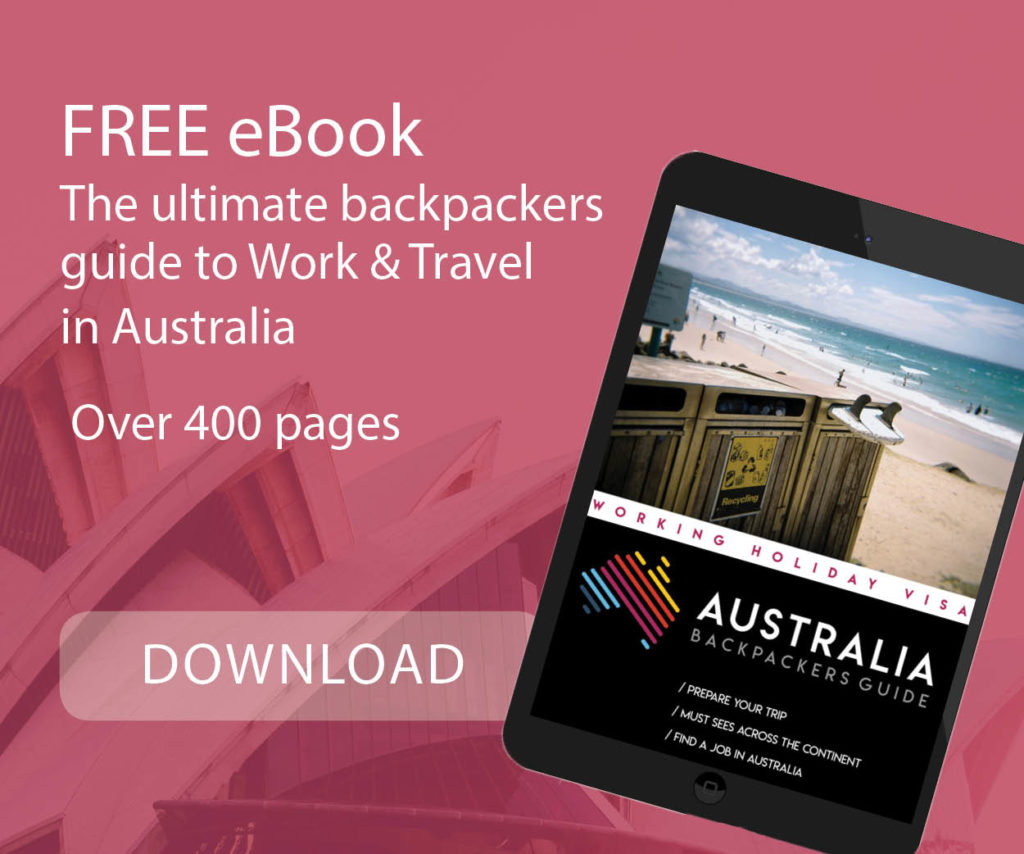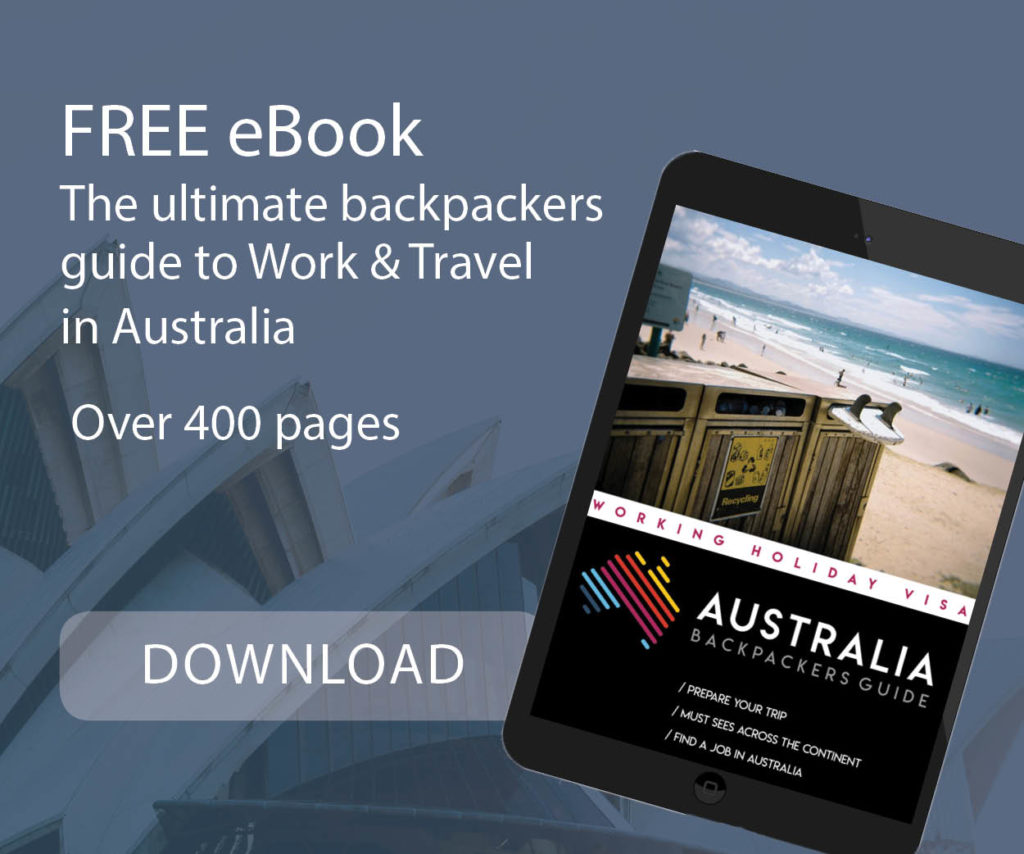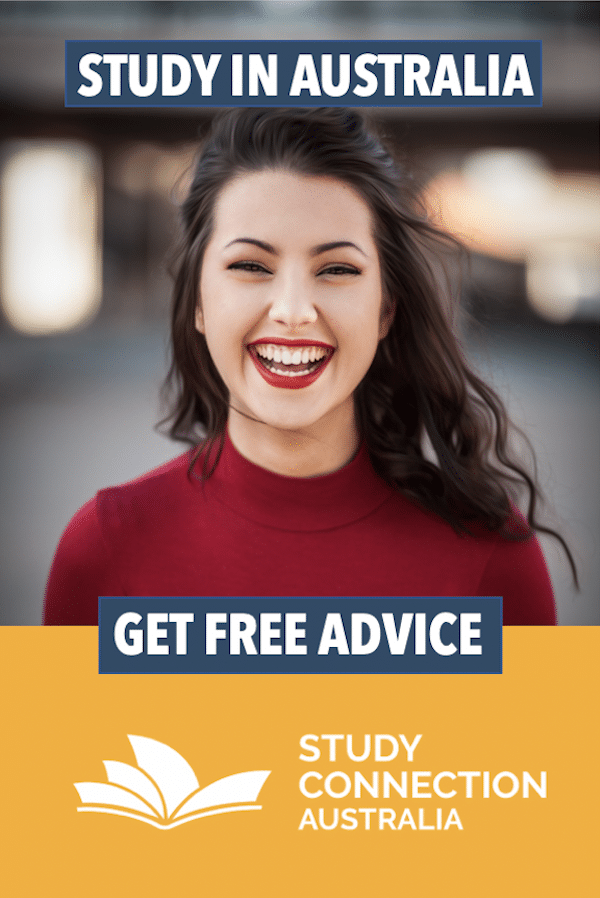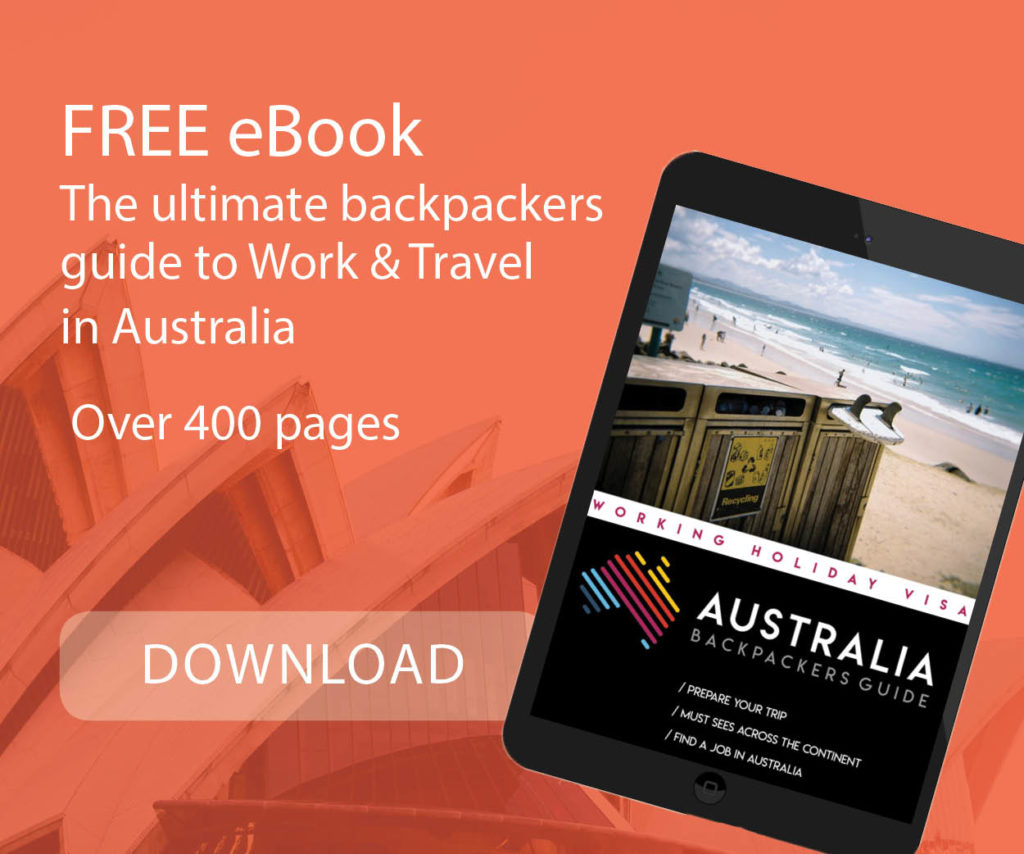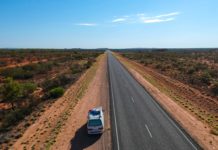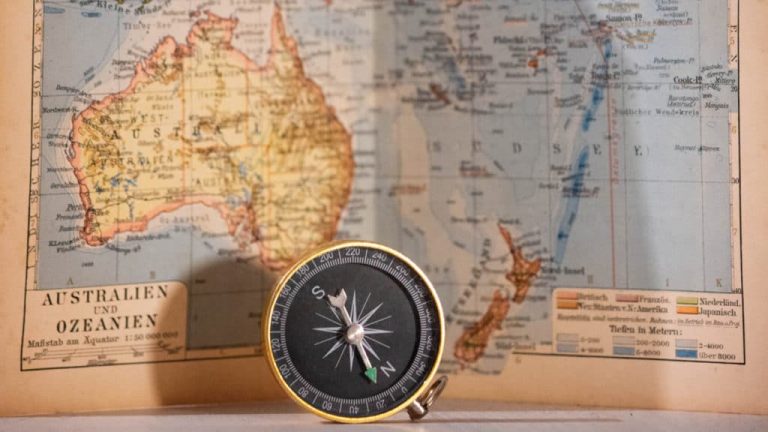
Starting a Working Holiday in Australia is an exciting adventure, offering the chance to explore stunning landscapes, experience vibrant city life, and immerse yourself in a rich cultural environment. With a Working Holiday Visa (WHV), travelers can earn money while discovering the country, making it essential to choose the right city for a smooth start.
Table of Contents
Define Your Priorities Before Choosing a City
Before deciding on your arrival city, take a moment to think about what you want from your Working Holiday experience in Australia. Are you prioritizing job availability, outdoor adventures, a lively cultural scene, or a particular climate? Your preferences will significantly impact your choice.
💡 Good to know
- If you’re eager to start your journey by exploring remote and wild landscapes, consider beginning in Western Australia or the Northern Territory.
- If you prefer comfort and easy access to services like supermarkets, showers, and public transport, the East Coast is a better option as it is more developed and populated.
Overview of Australia’s Major Cities
Your arrival city is a personal choice, shaped by your interests and travel goals. While Sydney and Melbourne are top picks for many, other cities offer affordable living, strong job markets, and unique experiences. Some cities are more budget-friendly, while others provide better career opportunities or warmer climates—so making an informed decision before departure is crucial.
We asked the Backpacker’s Guide community about their choice of arrival city. Here are the results:
Sydney (NSW): The Iconic Metropolis
Sydney, Australia’s most iconic city, is a top destination for Working Holiday Makers. With its stunning harbour views, world-famous Opera House, and golden beaches, Sydney offers the perfect mix of city life and outdoor adventures. Job opportunities are abundant, particularly in hospitality, tourism, and office-based roles. However, Sydney is one of the most expensive cities in Australia, so be prepared for higher rent and living costs.
Pros
Work
Cost of living
Climate
Popular attractions (Opera House, Harbour Bridge, famous beaches..)
Dynamic city with convenient public transport
Lots of parks and beaches
Surf culture
Night life
Economic centre of Australia
Lots of work opportunities but more competition
Salaries are a bit higher than in other cities
Housing: The most expensive city to live in in Australia, but it is possible to find affordable house shares. (House share with 4 people -> at least $350/ week).
Public Transport : Expensive, $4 per journey depending on area.
Score : 5/5
For more information see: Accommodation in Sydney
The weather in Sydney is temperate with mild winters and warm summers :
During Summer (Dec – Feb) average temperatures range from 18° to 26°. Average humidity spikes to 65%. Water temperature ranges from 21° and 24°.
In Autumn (March – May) average temperatures range from 14° and 22°.
During winter (June – August) average temperatures drop between 8° and 17°. Sydney’s rainfall is generally highest in June.
In Spring (Sept – Nov) Average daily temperatures range from 11° to 23°
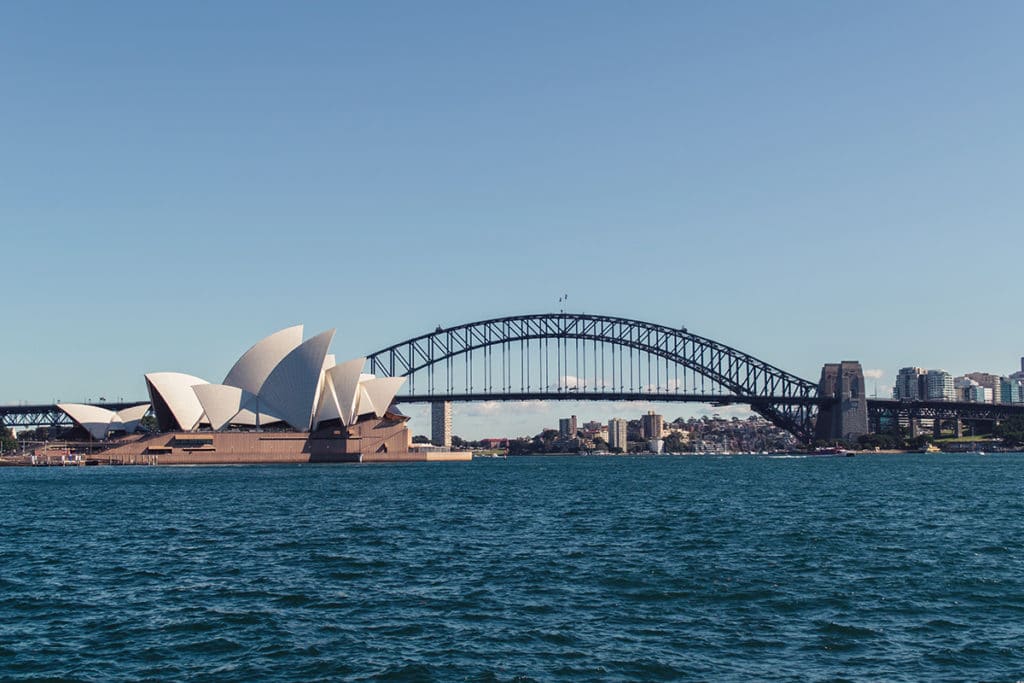
Melbourne (VIC): The Cultural Hub
Melbourne, the heart of Australia’s art and coffee scene, is famous for its lively laneways, music festivals, and diverse food culture. This city is perfect for creative souls, coffee lovers, and those looking to work in bars, cafes, or retail. With its unique mix of historic architecture and modern street art, Melbourne offers a cool, trendy atmosphere. While the cost of living is slightly lower than Sydney, the city’s unpredictable weather is something to keep in mind!
Pros
Work
Cost of living
Climate
Second city in the country
European culture vibes
Numerous cultural events all year long
Beautiful city with architectural diversity
Cosmopolitan population
Amazing street art
Night life
Good cycling infrastructure makes it easy to get around
Lots of work opportunities but more competition
Lots of work in hospitality and tourism (especially in summer). Start your job search a month in advance.
A bit cheaper than Sydney
Housing is quite expensive but you can find affordable house shares. Expect to pay about $300 for a house share with 4 people.
Score : 4.5/5
Melbourne is well known for its changeable weather conditions.:
During Summer (Dec – Feb) Temperatures range between 14° and 25°. Tops temperatures are in January and Feb.
In autumn (March – May) The weather is cooler with average temperatures ranging from 10°and 20°.
In winter (June – August) Temperatures range between6°-14°. Heavy rain is rare at this time of year but the weather is cold and cloudy.
In Spring (Sept – Nov) Average temperatures range from 10° and 19°. This season is known as the most variable of the year, it can be sunny for an hour and cold and windy in no time. October is the wettest month with at least 10 rainy days.
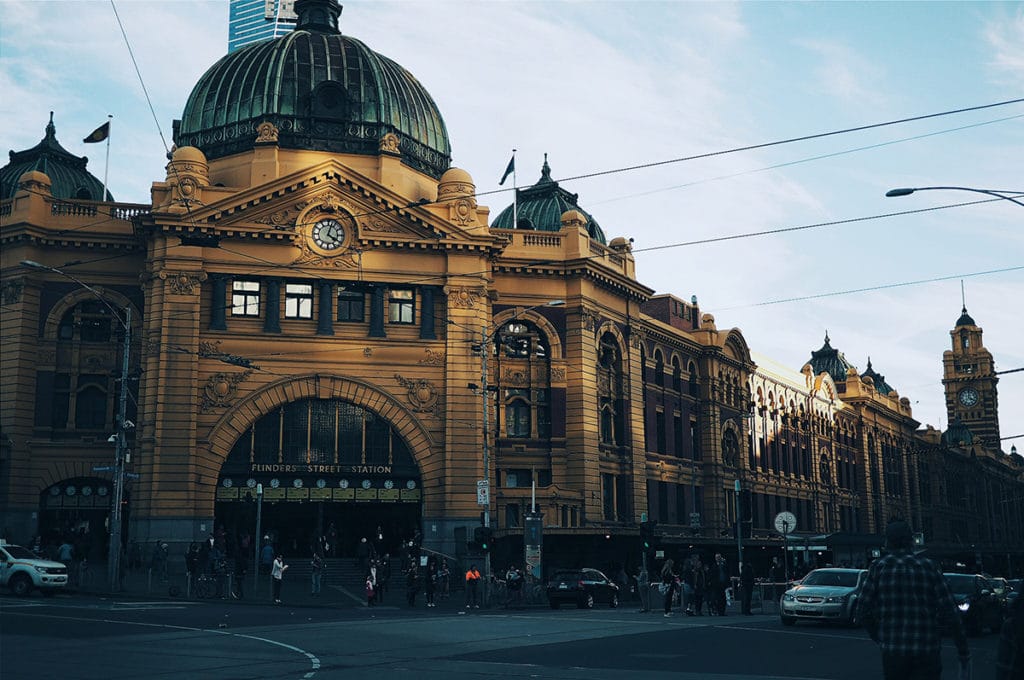
Brisbane (QLD): The Sun-Soaked City
Brisbane, the capital of Queensland, is a vibrant city that enjoys year-round sunshine and a relaxed lifestyle. As a gateway to top destinations like the Gold Coast, Fraser Island (K’gari), and the Great Barrier Reef, Brisbane is ideal for those who love both city life and outdoor adventures. The hospitality, tourism, and retail sectors offer plenty of job opportunities.
Brisbane is also more affordable than Sydney or Melbourne, making it a great place to start your Working Holiday without breaking the bank. Plus, its central location on the East Coast makes it a strategic starting point for a road trip—just be sure to check the seasons before setting off!
Pros
Work
Cost of living
Climate
Small city
Nice CBD with shops and restaurants
Nice beaches close to the centre
Nice weather all year round
Perfect starting point to visit the West Coast
Less competition for jobs than in Sydney and Melbourne
Growing city with lots of opportunities in the construction industry
Surrounding areas eligible to renew your WHV
Close to farms
Cost of living more affordable than Melbourne and Sydney
Housing: Cost approx $280/week for shared accommodation
Score : 4/5
During Summer (Dec – Feb) The weather is hot and dry with very little rainfall. Average temperatures range from 17°-30°.
In Autumn (March – May) Average temperatures range between 13° and 26°
In Winter (June – August) temperatures are ranging from 8°-19°. The weather is cold and wet.
During Spring (Sept – Nov) days are warm and sunny.
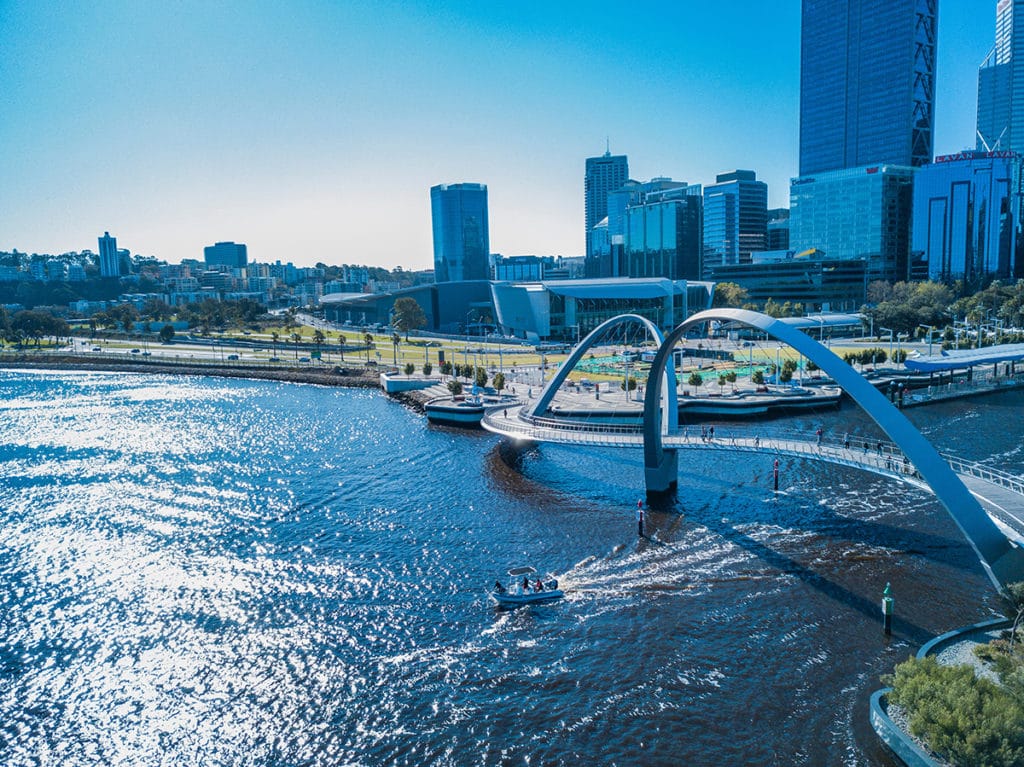
Adelaide (SA): Wine, Festivals, and Laid-Back Living
Adelaide, the capital of South Australia, is known for its world-famous wine regions, lively festivals, and relaxed atmosphere. The cost of living is lower than in Australia’s bigger cities, making it a budget-friendly choice for Working Holiday Makers.
If you’re interested in working in the food, wine, or hospitality industry, Adelaide is a fantastic option, especially with vineyards in Barossa Valley and Adelaide Hills offering seasonal work. It’s also a great city for buying a vehicle and sorting out your paperwork before heading off on an adventure across Australia.
Pros
Work
Cost of living
Climate
Small and welcoming city
Numerous festivals
Wineries and lors of farms in the area
Easy to find a job
Salaries are lower than in other cities
Work available on surrounding farms
Cost of living is lower than in other big cities
Housing is also more affordable. Expect to pay about $220 a week for shared accommodation.
Score : 3.5/5
Adelaide has mild winters and a warm summers.:
In summer (Dec – Feb) average temperatures range from 16°- 29° The city enjoys the lowest humidity of any Australian city.
In Autumn (March – May) the weather is nice with average temperatures between 12°- 23°.
In Winter (June – August) average temperatures drop to between 8°-16°. June is the wettest month.
In Spring (Sept – Nov) average temperatures range between 12°-22°
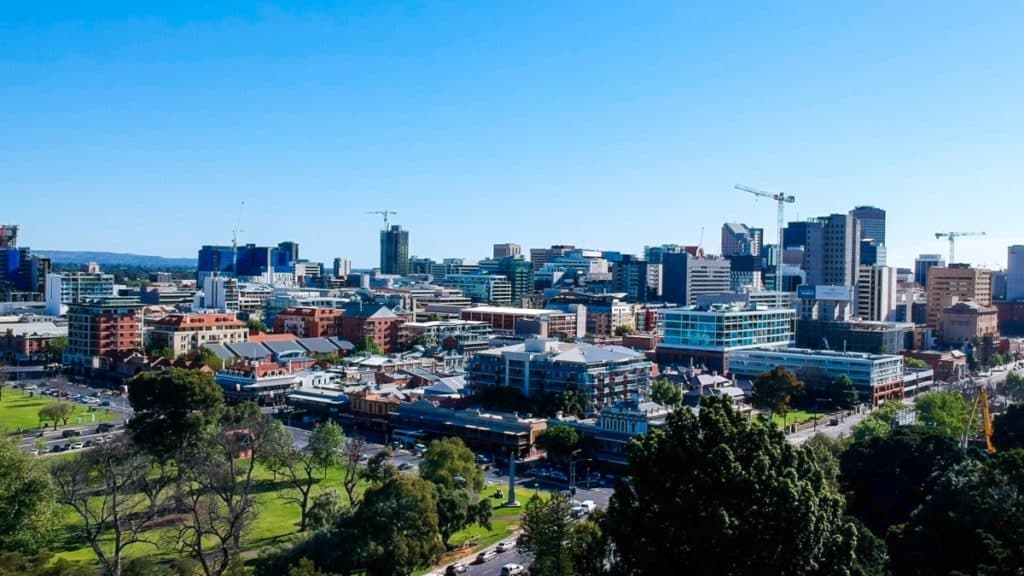
Cairns (QLD): The Tropical escape
Cairns is located in the far northeast of Australia, in the state of Queensland. It is a small tropical city and the main access point to the Great Barrier Reef. An international airport allows you to arrive in Cairns from abroad, however you will find fewer flights to this destination.
Cairns can be an ideal arrival city for those looking for sunshine and a quick change of scenery! Remember to check the climate carefully because the city experiences a rainy season, so avoid arriving during the Australian summer.
Pros
Work
Cost of living
Climate
Perfect gateway to the Great Barrier Reef
Tropical area
Excursions and national parks to discover
High demand for manpower for high season
Lots of opportunities in tourism and hospitality
Score : 3.5/5
Housing : Affordable compare to other cities.
Cairns experiences hot summer and mild winters :
In Summer (Dec – Feb) temperatures range between 24°-31°. The wet season begins building up in December.
In Autumn (March – May) it is still warm and temperatures range between 21°- 29°.
Winter (June – August) brings cooler temperatures and lower humidity, it is the best season to visit the area.
In Springs (Sept – Nov) average temperatures range from 20°-29°. This is the end of the dry season and humidity starts to build with the onset of the wet season from December.
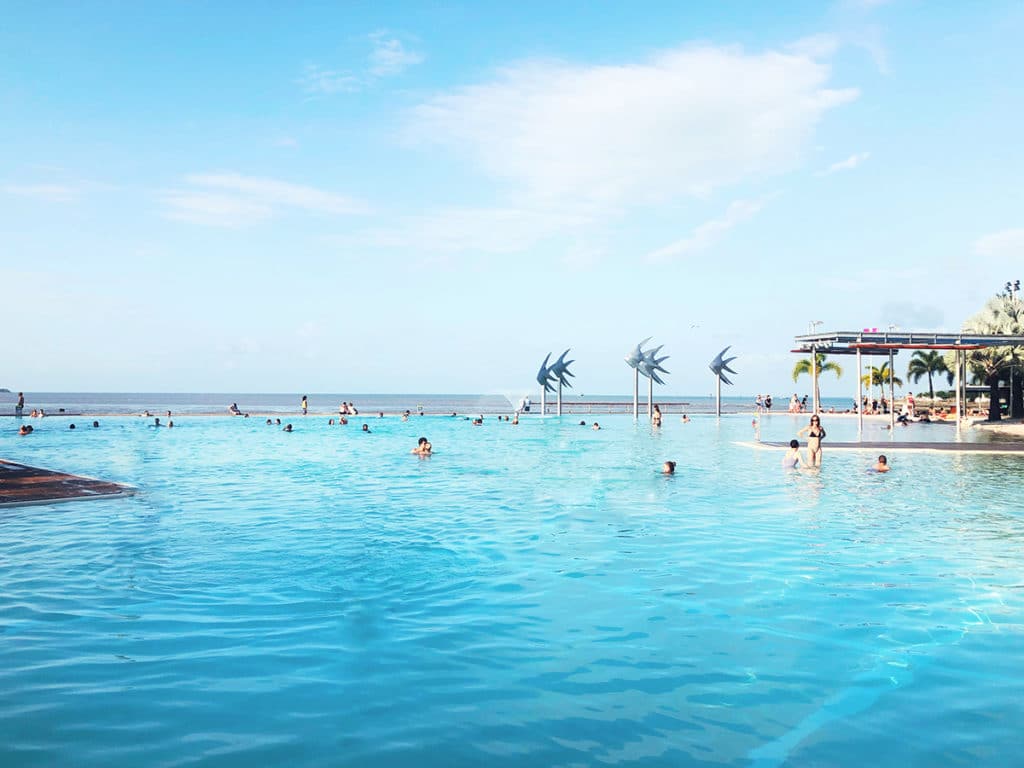
Darwin (NT): The Tropical Frontier
Darwin, the capital of the Northern Territory, offers a distinct experience with its tropical climate, rich Indigenous culture, and proximity to natural wonders like Kakadu National Park. Founded in 1869, the city takes its name from Charles Darwin, a famous naturalist and biologist who studied Australia’s biodiversity during his voyage aboard the ship Beagle. It’s a hub for those interested in outdoor and wildlife jobs, with opportunities in tourism, conservation, and agriculture. Darwin’s laid-back lifestyle and multicultural community make it a unique choice for those looking to experience a different side of Australia.
Pros
Work
Cost of living
Climate
A city on a smaller scale, perfect for a smooth arrival
Tropical region
Lots of activities and national parks in the area
High demand for workers during the busy season (June-September)
Lots of jobs in the hospitality and tourism industries
Score : 4/5
Housing : Less expensive than other large cities in Australia. Budget around $180 a week for a room in a houseshare.
Darwin has a dry season from May to September. It is hot to very hot, but dry.
The wet season is from October to April. The heat is quite oppressive. You will be assaulted by the rain and humidity every day!
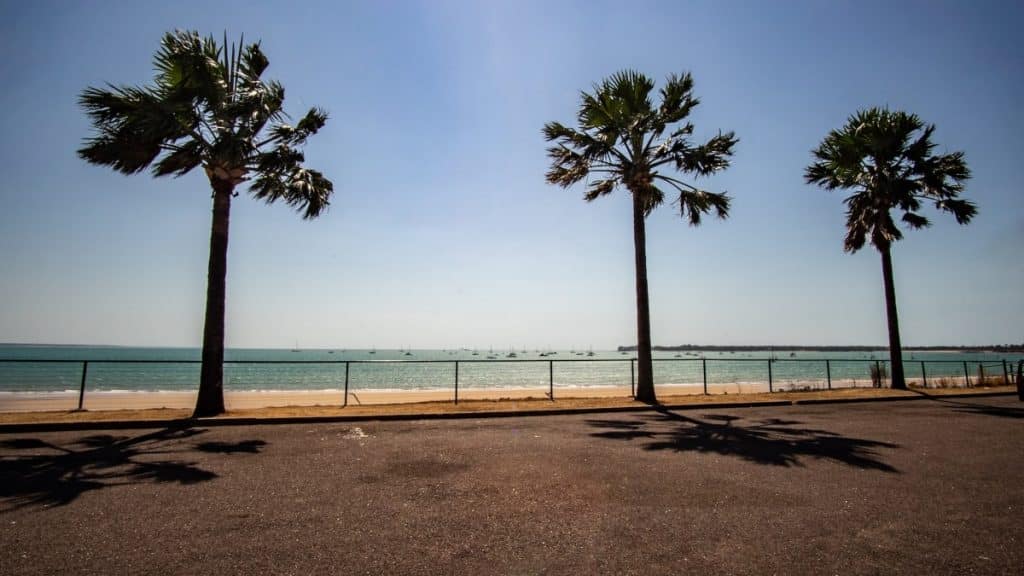
Hobart (TAS): The Tranquil Retreat
Hobart, the capital of Tasmania, offers a tranquil retreat with its charming colonial architecture and access to stunning natural landscapes. It’s perfect for those who prefer a quieter setting. Job opportunities are mainly in hospitality, agriculture, and tourism sectors. However, note that international flights to this destination might be limited.
Pros
Work
Cost of living
Climate
A city on a smaller scale
Lots of national parks to explore
High demand for workers during the busy season (June-September)
Lots of jobs in the hospitality and tourism industries
Lots of jobs in farms (north and south of Tasmania)
Score : 4.5/5
Housing : Much less expensive than other cities in Australia. Budget around $180 a week for a room.
Hobart enjoys a mild maritime climate with four distinct seasons.
Winters are cool and can be brisk, often accompanied by rainfall.
Summers are warm and pleasant (but short)
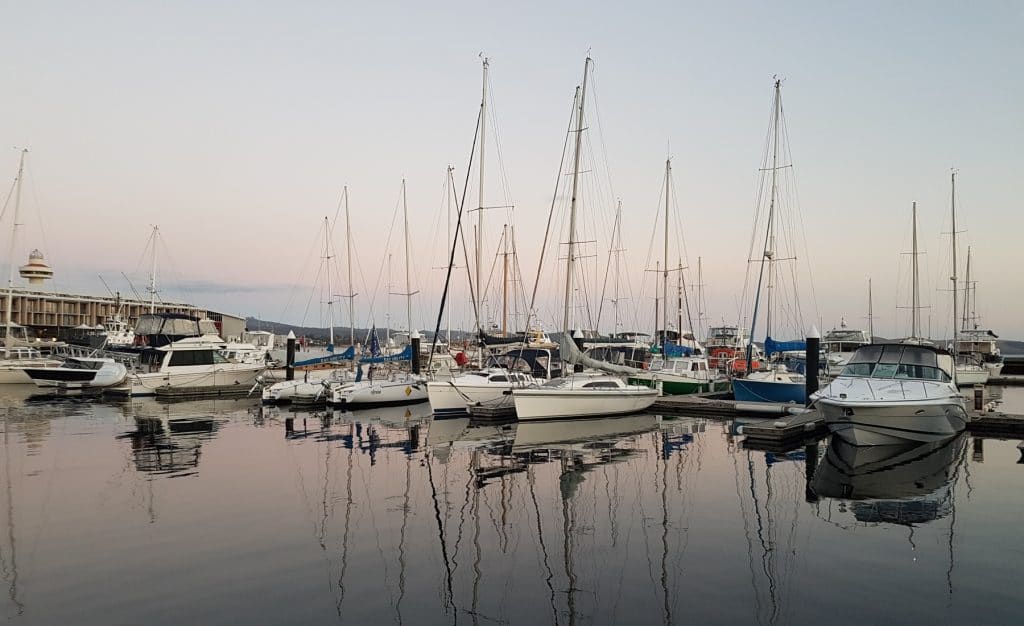

Choosing the City based on your expectations
Best Cities for Job Opportunities
If securing a job is your main focus, starting in a major city is a smart choice:
- Sydney: With its dynamic economy, it’s a popular destination for finding a job in hospitality, commerce, or tourism.
- Melbourne: Known for its culture and art, it offers opportunities in cafes, bars, and the creative industry.
- Brisbane: A pleasant climate and a growing job market, ideal for those looking for a more relaxed experience.
Best Coastal Cities for Beach Lovers
If your dream is to wake up near the ocean, these coastal cities are ideal:
- Gold Coast: Known for its spectacular beaches and laid-back lifestyle.
- Perth: Offers a unique mix of urban beaches and natural parks, with sunny weather.
Regional Areas for an Authentic Australian Experience
For those seeking a more immersive experience in rural Australia (and looking to qualify for a second-year visa), consider:
- Adelaide: A relaxed, affordable city near world-famous wine regions with job opportunities in vineyards and farms.
- Darwin: A tropical getaway with outback jobs and tourism opportunities, plus access to Kakadu National Park.
Cost of Living: Where to Get More for Your Money?
The cost of living can significantly impact your Working Holiday experience.
💰 Most Expensive Cities: Sydney & Melbourne
🏠 More Affordable Choices: Adelaide, Perth & Brisbane
Choosing Your Arrival City Based on Seasons
Australia is a huge country, and the climate varies hugely from one region to another. The first thing to take into account is the season in which you will arrive in Australia. Remember that in Australia the seasons are reversed compared to the northern hemisphere!
☀️ December – February: Summer
Summer in Australia is the time to visit the southern states of the country (NSW, VIC, SA, TAS and the south of WA). Generally speaking, it gets very hot, temperatures ranging from 25 to 40 degrees (celsius), sometimes even higher than that! In Sydney, the weather can vary, as the intense heat waves can cause rain and thunderstorms. But it is normally very nice and warm. Melbourne has a somewhat unusual climate. The daytime can be very hot and then heavy showers can fall, bringing the temperature down by 10°. You should always bring a sweater or windbreaker with you if you’re in Melbourne!
🍂 March – May: Autumn
During autumn, you can move around more or less the entire country. In the southern half of the country, temperatures are mild (20-25°C). In the northern half, it will be the end of the wet season. It will therefore still be hot and humid. There is also still a risk of flooding, so be vigilant!
❄️ June – August: Winter
During winter, the ideal region to visit is the Top End, the most northern part of Australia (Northern Territory and the north of Queensland). That’s when the dry season starts, and it doesn’t get as hot (it can still be about 30 to 35 degrees though!).
The southern part of the country can get pretty cold, resulting in snow in Victoria’s mountains! In Sydney or Melbourne, winter brings moderate temperatures, ranging from 10 degrees in the morning to 18 degrees during the day. Generally, winter is pretty sunny and temperatures feel hotter than they are.
🌸 September – November: Spring
Spring in Australia brings a bit of everything. You have to be extra vigilant at this time in the north, as wet season officially starts in October and it starts to get very hot and humid in that part of the country. This season is ideal for discovering the south without having to suffer extremely hot temperatures and huge crowds of tourists.
Read more: Climate zones and seasons in Australia
⚠️ School holidays in Australia ⚠️
Good to know: School holidays in Australia start in mid-December and finish at the end of January, so that is when there are enormous amounts of tourists as well as higher hotel and camping prices. If you’re renting a vehicle, prices will also be higher during this period.

Planning Your Australian Adventure: Where Do You Want to Go?
Your arrival city can also depend on your travel itinerary. Planning a rough route before you land will help you optimize your journey, keeping in mind both seasonal weather conditions and job opportunities (especially in fruit picking). Even if you don’t stick to it 100%, having a plan will make it easier to adjust your trip along the way
🚗 Distances in Australia: Don’t Underestimate the Size!
A common mistake is to underestimate travel times in Australia. Unlike Europe, where 100 km can mean a 1-hour drive, in Australia, the roads are long, often remote, and require proper planning. You’re here to enjoy the scenery, not to rush through your trip!
💡 Pro tip: Sometimes, less is more. Instead of trying to see everything, focus on a few key regions and explore them properly.
📍 Planning a One-Year Trip?
If you’re staying in Australia for a year, an effective way to plan your trip is to divide the country into four main regions and spend approximately three months in each.
⏳ Don’t forget:
- Work opportunities: You’ll likely need to stop for a few months to earn money along the way.
- Visa requirements: If you plan on applying for a second-year visa, choose your work location wisely.
- Flexibility is key: Unexpected opportunities and travel companions might influence your journey, so leave room for spontaneity!
Prices for flight tickets
Prices for flight tickets to Australia vary from season to season and depend on which city you’re landing in. In the north, for example, high season (= more expensive flights) is during Australian winter. In the south the main season is around and during the Christmas holidays. Your departure date can thus help you make decision on where exactly you want to fly to. If you find a great deal for a flight to Melbourne, for example, that might also help you with your choice. As a reminder, expect to pay at least €1,200 for a flight to Sydney (AR). Ticket prices are currently high, so book ahead if you can.
Read more: Cheap flights to Australia
What Are Your Plans Once You Arrive in Australia?
🏙️ Staying in the City: Urban Life in Australia
If you want to settle for a few weeks or months in a major city, consider the pros and cons of each. The most popular cities for backpackers are Sydney, Melbourne, Brisbane, and Perth, but each has its own job market, lifestyle, and cost of living.
Where should you go for work?
- Sydney & Melbourne: High competition but plenty of job opportunities in hospitality, retail, and corporate sectors.
- Brisbane: A growing job market with a more relaxed lifestyle.
- Perth & Adelaide: Often overlooked but offering plenty of jobs and lower living costs.
🏖️ Love the beach?
If surfing and beach life are a priority, Sydney, Gold Coast, or Perth are great choices. However, Brisbane and Cairns might not be ideal, as they have fewer surfing beaches.
🚜 Finding a Job Quickly
If you want a fruit picking job, it is essential to check the harvest calendar in order to arrive at the right place at the right time. It is also recommended to arrive two weeks before the start of the harvest in order to carry out all the necessary admin, find a vehicle and start applying to farms.
If you want to work in a city, you can arrive in the one of your choice. There will always be jobs available. We advise you to avoid Sydney or Brisbane during the high season as there is a lot of competition (not to mention Australian students who are on vacation). But these big cities are also the ones that offer the most opportunities. Cities like Adelaide or Perth can be a good idea to start! There will be many job offers and often these cities are forgotten about by backpackers (especially Adelaide).
🚐 Going on a Road Trip?
Would you prefer to buy or rent a vehicle to travel Australia? If you choose to buy, vans will be more expensive if you arrive in Sydney during high season (between October and January). The rule of supply and demand always applies. There are a lot of potential buyers, so the prices are higher! On the other hand, if you arrive in June, you could find yourself a great deal! On the other hand, if you arrive in a smaller city or out of season, your choices will be more limited.
If you want to rent a vehicle, then think about doing it in advance. That way you can benefit from better rates and have more choice as to the type of vehicles etc.
Final Thoughts: Picking the Right City for Your WHV
Your ideal starting point depends on:
✅ Your budget & job priorities
✅ Your lifestyle preferences (city, beach, adventure)
✅ Your travel itinerary & seasonal conditions
The best part of a Working Holiday Visa? You’re not stuck in one place! If your first choice doesn’t work out, pack up and move on. Embrace the adventure and make the most of your time in Australia!





